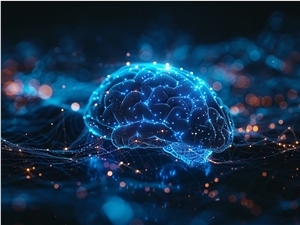Ann Johnson, a high school teacher from Saskatchewan, Canada, became paralyzed due to a brainstem stroke in 2005, suffering from near-complete physical paralysis and the torment of locked-in syndrome. This condition left her conscious but unable to speak or move. To communicate with the outside world, Johnson relied on an eye-tracking system, allowing her to communicate at a rate of only 14 words per minute, far below the average of about 160 words per minute for normal conversation.

Image source note: The image is AI-generated, and the licensing service provider is Midjourney.
Now, Johnson has regained the ability to speak through an emerging brain-computer interface (BCI) technology. This technology, developed by research teams at the University of California, Berkeley, and the University of California, San Francisco, aims to restore language abilities in severely paralyzed patients through a neural prosthesis. In 2022, Johnson became the third participant in this clinical trial. Researchers implanted a neural prosthesis that recorded neural signals from the language motor cortex in Johnson's brain, bypassing damaged neural pathways to produce audible speech.
The core of this technology is an implanted device that detects neural activity when Johnson attempts to speak, transmitting the signals to a connected computer. Subsequently, an artificial intelligence decoder converts these signals into text and speech. Initially, the system had a delay of about 8 seconds, but the research team reported in March 2025 in the journal "Nature Neuroscience" that they had successfully reduced the delay to one second, achieving near real-time speech conversion.
To make Johnson's experience more personalized, researchers also recreated her voice using a recording of her wedding speech from 2004 and selected a virtual avatar that matched her, capable of mimicking facial expressions such as smiling or frowning. In the future, the research team hopes to make this neural prosthesis "plug-and-play" and plans to develop wireless implantable devices to avoid the inconvenience of direct connections to computers. Additionally, the researchers envision creating digital "clones" that can not only replicate a user's voice but also mimic their conversational style and visual cues.
Key Points:
🌟 Johnson was paralyzed for 18 years after a brainstem stroke and communicated using an eye-tracking system.
💡 A new brain-computer interface technology has enabled her to regain the ability to speak, with the delay time reduced to 1 second.
🌈 Future plans include developing wireless devices and digital "clones" to help more patients with speech disorders.










